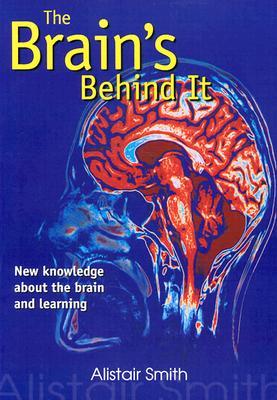

 |

|

The average rating for The brain's behind it based on 2 reviews is 4 stars.
Review # 1 was written on 2015-11-01 00:00:00 Beau Eidt Beau EidtA bit old but nice overview |
Review # 2 was written on 2016-06-02 00:00:00 Walt Walt Walt WaltI've had this book for many years so I decided I should either read it or chuck it out. For some reason, when I wanted a book about the brain, I kept picking something else off the shelf instead. As it's a science-based book I was concerned about the research being out of date by now. It actually is, to some extent, but most of it is still relevant. There are some references to male/female differences which I think he would want to rewrite for today's audience: they came across as sexist to me but it was written in 1979, the most chauvinistic decade of the 20th century I think, so let's give him a break on that one. It's a well-written book and easy to read. There are enough case studies to illustrate the points he is making, but no unnecessary padding. It's basically a user manual for the brain. The first section explains how the brain is structured and how it works. He gives enough detail here to support the practical advice in the second section, which advises how to get the best out of your brain. I liked the fact that he recommends summarising your notes, and then practices what he preaches by making the last chapter a summary of the entire book. So below is my summary of his summary. (!) Unlike a computer, the brain can carry on thousands of processes at one time, continually cross-referencing and integrating new information. The extent to which we use its potential determines the extent to which we progress, both as individuals and as a race. The brain is constantly developing and changing as a result of experience. It has an almost unlimited capacity for learning. We get the most out of our brain when we integrate the two hemispheres. Meditation can help with this, as can consciously using the right brain in such creative activities as drawing a mind map. There is no neurological reason to expect decline in brain function with age: this is more likely to be due to a lack of use and an expectation of decline. There is no experimental evidence to support the idea that older people lose current memories and can only remember childhood ones: this is more likely to be due to childhood being more eventful. The brain can recover from damage or decline by repurposing brain cells. Self-care for the brain should include exercise, rest and a wholesome diet. In any learning session, things at the beginning and end are remembered the best, as are unusual or bizarre items. Regular breaks are important, during which the eyes should be rested and exercise taken to increase oxygen levels. Take breaks even when the learning is going well: understanding is not remembering. Limit groups of facts to seven: split facts into several separate groups if necessary. Make associations between facts, between new and existing learning. Organise the facts to help the brain retain them: organisation is memory. Use imagery and visual learning. Try mnemonics, including a peg system. Review learned information regularly to aid retention. Be aware of your mental 'set' and keep it positive. To get the most out of a book: 1. Plan your reading 2. Review your current knowledge 3. Establish objectives 4. Overview (5 minutes): title and subtitle, authors, date of publication, Contents, Index, diagrams / pictures / graphs, dust jacket and/or cover, preface. 5. Preview 6. High-speed reading 7. Study in depth 8. Mark and underline 9. Reject 10. Take regular breaks 11. Draw mind maps 12. Review. |
CAN'T FIND WHAT YOU'RE LOOKING FOR? CLICK HERE!!!